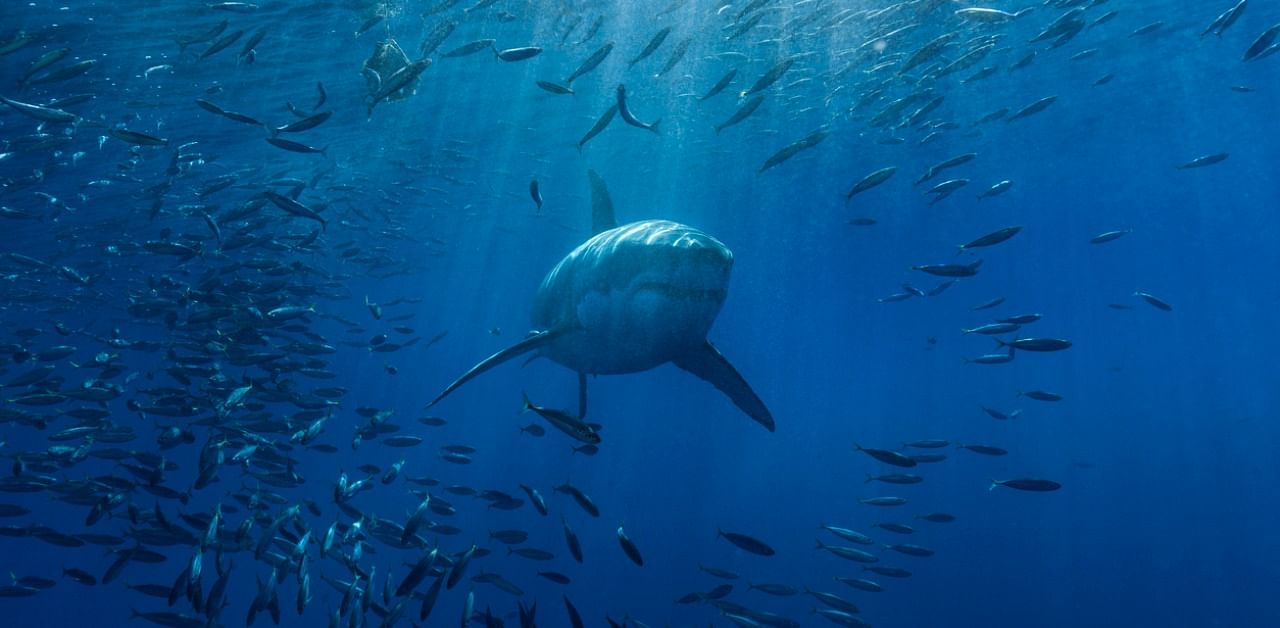
The shark attacked Sunday, when Charles Cernobori, 59 and a father of three, was bodysurfing off Cable Beach in Western Australia. A couple found him, dragged him to the beach and called emergency services.
By the time they arrived, it was too late to save Cernobori.
His death was the eighth linked to a shark in Australia this year, the most in nearly a century. The record for shark attacks in a single year was in 1929, which saw nine. In recent decades, the annual average has been one.
What’s behind the increase in deaths? The question is vexing many in Australia, where public pressure is rising for authorities to take tougher measures to protect the country’s picturesque coasts this summer as people emerge from coronavirus lockdowns and eagerly head to the beach.
Scientists find the high numbers shocking, and they wonder what forces may be at play.
“There’s more than one shark expert who’s shaking their head right now, thinking, ‘What on earth is going on?’ ” said Culum Brown, a professor of marine biology at Macquarie University in Sydney who studies shark behaviour.
“Eight is certainly off the scale, and we haven’t even finished the year yet,” he added.
‘It’s probably just really bad luck’ …
The losses this year have been harrowing: Among the victims are an experienced scuba diver and a teenage surfer. A search for another man was called off after days of looking. Others have survived, albeit traumatized and seriously injured by the apex predators, whose territory Australians enter when they swim in the ocean.
But while the killer sharks have spooked beachgoers, scientists say that the chance of being mauled by them is still low. You are more likely to die from a lightning strike or a train crash, or by freezing, than from a shark attack. And attacks in a single year do not provide enough data points to draw conclusions about a cause, experts say.
“There’s so many confounding variables,” said Phoebe Meagher, who manages the Australian Shark Attack File, a database of interactions between humans and sharks, including those that result in fatalities.
Meagher said that although the number of people who have died in shark attacks this year is higher, the number of total unprovoked encounters, 20, was right on average.
“There may be nothing crazy at play here,” she said. “The fact that incidents result in fatalities — it’s probably just really bad luck.”
… Or climate change
Brown also said that climate change, which causes the ocean to warm, could be driving sharks into cooler territory at the same time that more people are flocking to the beach on hot days.
Australians have been permitted to visit the beach even under strict coronavirus restrictions in some states, which may have contributed to larger numbers of crowds and surfers.
But this would not explain why the overall number of interactions between sharks and people has remained the same.
Other scientists have suggested that shifting ocean temperatures — the result of La Niña weather patterns — could be moving the sharks’ hunting grounds, leading them toward more populated beaches.
Following and feeding on humpback whales
Another theory is that the sharks could be following humpback whales — whose populations have boomed in recent years — on their yearly migration north from Antarctica and opportunistically feasting on those that die along the way.
“Sharks are simply moving to where their prey is going to be,” said Vanessa Pirotta, who also researches marine predators at Macquarie University. But, Pirotta added, more whales do not necessarily equal more sharks.
Though the jump in deaths is attention-grabbing, the chances of being mauled and killed by a shark are still extremely slim, experts say. Last year, 11 people were involved in what the International Shark Attack File defines as “unprovoked attacks” in Australia. None of those were fatal. The most, 41, occurred in the United States, but nobody died there, either.
Sharks do not actively hunt humans but may attack when they feel threatened or confuse people for prey. Drone footage, scientists say, has shown that sharks will often swim in the same water as surfers and bathers without attacking them. Scientists are exploring solutions that include attaching LED lights to the bottoms of surfboards to prevent sharks from confusing surfers with seals.
'Political hot potato’
Still, the issue has become a “political hot potato,” Brown said, with state governments investing money in beach-protection measures including setting traps for the animals, using drones to track them and enclosing beaches in shark nets — despite the fact that the meshing programs have been shown to have little success.
The deaths have also reignited debate around culling the creatures, which animals rights activists say is inhumane. Nets placed around the beaches to protect swimmers have also resulted in the accidental deaths of thousands of other marine creatures including turtles, stingrays and aquatic mammals called dugong.
Even some of those who have been attacked by sharks oppose culling or shooting them. The police fired about 25 bullets at the shark that killed Cernobori.
“I’ve always been against the culling of them,” said Phil Mummert, 28, who survived an attack off Western Australia in July. Mummert was surfing at Bunker Bay, south of Perth, when a shark bit his board in two and punctured his upper thigh, just an inch from his femoral artery.
He said he was glad that, in the end, the authorities had not succeeded in locating the shark that had attacked him. “There’s just no way to know that’s the one,” he said.
Nonetheless, he said, the high number of deaths this year had been a constant and painful reminder of his experience.
“It really drives it home for me just how lucky I was to come out of that alive,” he said.